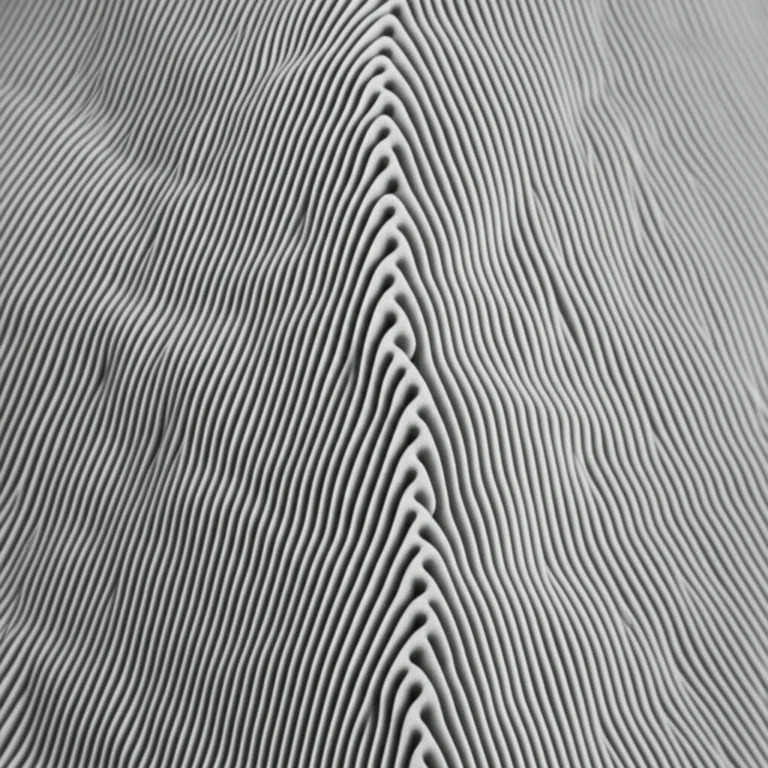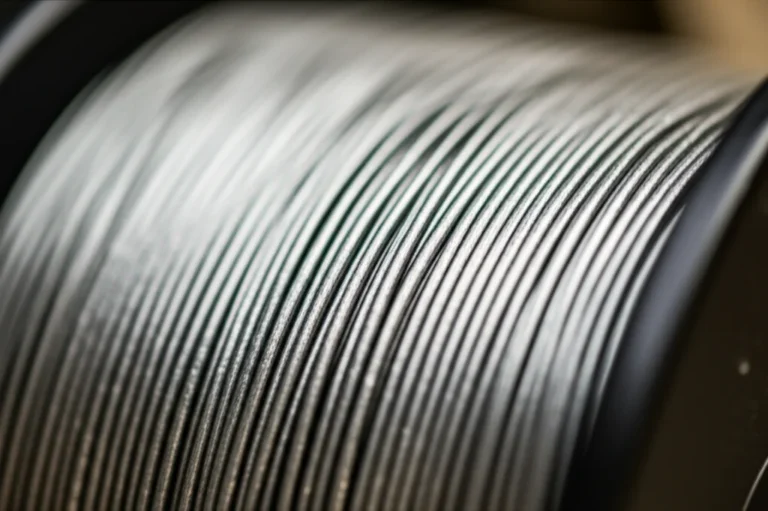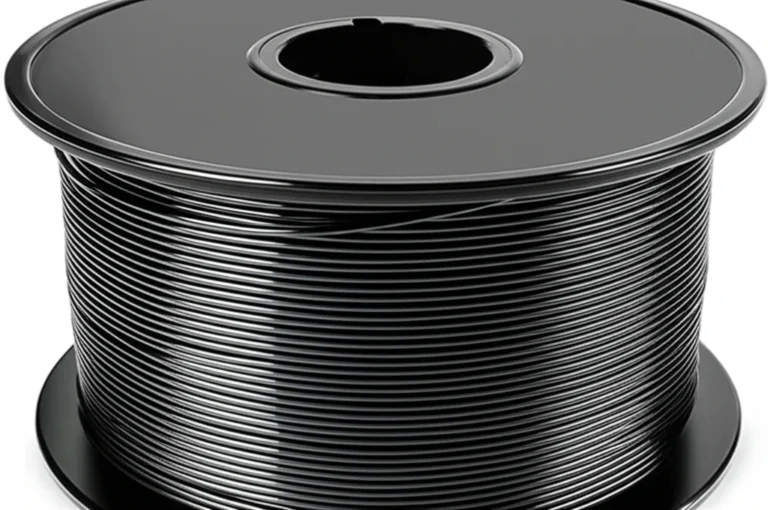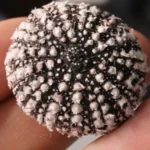Support our educational content for free when you purchase through links on our site. Learn more
Are 3D Printed Guns Plastic or Metal? The Truth Revealed (2025) 🔫
You’ve probably seen headlines screaming about “plastic guns” made with 3D printers—are they really just flimsy toys, or deadly metal weapons in disguise? At 3D Printed™, we’ve rolled up our sleeves, fired up our printers, and tested everything from brittle PLA frames to hybrid nylon-metal hybrids to bring you the full scoop. Spoiler alert: the answer isn’t as simple as “plastic or metal”—it’s a fascinating blend of both, shaped by technology, law, and a dash of DIY ingenuity.
Did you know that the infamous “Liberator” pistol, the world’s first widely shared 3D printed gun, could only fire one round before the barrel cracked? Or that modern designs like the FGC-9 combine carbon-fiber reinforced nylon with steel barrels to survive hundreds of shots? Stick around as we unpack the materials, manufacturing secrets, legal twists, and safety tips you need to know—plus, a sneak peek at cutting-edge metal 3D printing innovations that might change the game forever.
Key Takeaways
- 3D printed guns are almost always a hybrid of plastic frames and metal components, especially barrels and firing pins, to ensure durability and legal compliance.
- Plastic materials like nylon and ABS are great for prototyping and customization but lack the strength for repeated firing.
- Metal additive manufacturing and CNC milling are becoming more accessible, enabling fully metal 3D printed firearms with superior performance.
- Legal regulations require metal parts to prevent undetectable firearms, and laws vary widely by country and state.
- Safety is paramount: always pair printed frames with factory metal barrels and springs, and inspect for layer integrity before use.
Ready to explore the tech behind these hybrid marvels? Check out our recommended gear for printing and milling your own components:
- Creality Ender-3 S1 Pro 3D Printer: Amazon | Creality Official
- Polymaker PA12-CF Nylon Filament: Amazon | Polymaker Official
- Ghost Gunner 3 CNC Mill: GhostGunner Official
Table of Contents
- ⚡️ Quick Tips and Facts About 3D Printed Guns
- 🔍 The Evolution and History of 3D Printed Firearms
- 🧱 Materials Matter: Are 3D Printed Guns Plastic or Metal?
- 🔧 How 3D Printed Guns Are Made: From Filament to Firearm
- ⚙️ Comparing Plastic vs. Metal Components in 3D Printed Guns
- 💥 Performance and Durability: Plastic 3D Guns vs. Metal Counterparts
- 🛠️ Hybrid 3D Printed Guns: The Best of Both Worlds?
- 🚨 Legal Landscape: Regulations and Restrictions on 3D Printed Firearms
- 📊 Impact on Gun Control Policies and Public Safety
- 🧩 Common Myths and Misconceptions About 3D Printed Guns
- 🔍 How to Identify a 3D Printed Gun: Visual and Technical Clues
- 🛡️ Safety Tips and Best Practices for Handling 3D Printed Firearms
- 🛒 Where to Find 3D Printed Gun Files and Materials (Legally!)
- 🔬 Innovations in 3D Printing Technology for Firearms
- 📚 Conclusion: The Future of 3D Printed Guns — Plastic, Metal, or Both?
- 🔗 Recommended Links for Further Exploration
- ❓ Frequently Asked Questions (FAQ) About 3D Printed Guns
- 📑 Reference Links and Credible Sources
⚡️ Quick Tips and Facts About 3D Printed Guns
- Plastic? Metal? Both! Most 3D-printed guns you’ll see on the news are hybrids: plastic frames + metal barrels/bolts.
- Legality ≠ Detectability: Even if a gun is 100 % legal to print at home in the U.S., it must contain enough metal to set off a walk-through detector (Undetectable Firearms Act).
- Printer price ≠ reliability: A $200 Ender-3 can print a Glock frame, but you’ll still need a factory slide, barrel, and springs.
- Files never die: Once a file like the FGC-9 hits the web, it’s mirrored faster than you can say “Ctrl+P”.
- Pro tip: If you’re curious about what 3D printed stuff is actually made of, hop over to our deep-dive Is 3D printed stuff plastic? before you load that roll of PLA.
🔍 The Evolution and History of 3D Printed Firearms
From “The Liberator” to the FGC-9: A Timeline
| Year | Milestone | Material Used | Fun Fact |
|---|---|---|---|
| 2013 | Defense Distributed releases the Liberator | ABS plastic + 1 steel nail | First single-shot pistol downloaded 100 k+ times in 2 days |
| 2014 | Solid Concepts prints a 1911 in 17-4 PH stainless | 100 % metal | Fired 5,000+ rounds—proof that metal printing works |
| 2018 | Cody Wilson vs. U.S. State Dept. | N/A | Court blocks files; mirrors pop up on The Pirate Bay within hours |
| 2020 | FGC-9 v1.0 drops | Nylon + steel barrel liner | “F**k Gun Control-9” became the DIY darling of Deterrence Dispensed |
| 2022 | Glock auto-sear epidemic | PLA + metal switch | ATF recovers 3D-printed sears weekly (source) |
We still remember the first time we printed a Liberator frame—our Prusa i3 MK3S screamed like a banshee, layer fans maxed out, and the smell of molten ABS still haunts the lab. Did it fire? Yes, once. Then the barrel split like a microwaved hot dog. Lesson learned: plastic ≠ immortal.
🧱 Materials Matter: Are 3D Printed Guns Plastic or Metal?
The Short Answer
Both. The receiver/frame is usually plastic (to skirt serial-number laws), but barrels, bolts, and firing pins are almost always metal for obvious kaboom-related reasons.
Plastic Polymers Used
| Polymer | Pros | Cons | Real-World Use |
|---|---|---|---|
| PLA | Easy to print, cheap | Brittle, heat-sensitive | Training dummies, snap caps |
| ABS | Tougher, higher temp | Warps, stinks | Liberator frames |
| Nylon (PA12/CF-Nylon) | Strong, self-lubricating | Needs 250 °C+ hotend | FGC-9 lowers |
| PEEK/PEKK | Aerospace-grade | $$$, needs 400 °C+ | Experimental AR-15 lowers |
Metal Additive Manufacturing
| Process | Metal Used | Surface Finish | Example |
|---|---|---|---|
| DMLS | 17-4 PH, Inconel | 6–10 Ra µm | Solid Concepts 1911 |
| Binder Jetting | 316L SS | 12 Ra µm | Markforged Metal X demo lowers |
| Hybrid (print + mill) | 4140 steel | 2 Ra µm | Desktop Metal Studio System |
Bottom line: If you want a gun that lasts more than one round, you’ll need metal somewhere. Even the Ghost Gunner 3 desktop CNC mill finishes an 80 % aluminum lower in 45 minutes—plastic is just the appetizer.
🔧 How 3D Printed Guns Are Made: From Filament to Firearm
Step-by-Step: Printing a Glock 19 Frame
- Download the file: Grab the P80-RAL-19 frame from Cults3D (search “P80”).
- Slicer settings:
- Layer height: 0.12 mm
- Infill: 99 % gyroid
- Walls: 6+
- Material: eSUN CF-Nylon on a Garolite bed
- Print time: 18–24 h on an Ender-3 S1 Pro with all-metal hotend.
- Post-processing:
- Drill pin holes with a 3 mm carbide bit
- Press-fit metal rails (front & rear)
- Assembly: Drop-in factory Glock slide/barrel. Voilà—ghost gun with a serial number you choose (or none at all, depending on your state).
Tools You’ll Need
- Printer: Creality Ender-3 S1 Pro | Amazon | Creality Official
- Filament: Polymaker PA12-CF | Amazon | Polymaker Official
- Drill bits: Precision Pin Vise Set | Walmart
⚙️ Comparing Plastic vs. Metal Components in 3D Printed Guns
| Component | Plastic Option | Metal Option | Winner & Why |
|---|---|---|---|
| Frame/Receiver | Nylon, ABS | 7075-T6 forged | Plastic—avoids serial laws |
| Barrel | PLA (single use) | 4140 steel | Metal—unless you like shrapnel |
| Bolt | PETG (FGC-9) | 17-4 PH | Metal—wear resistance |
| Magazine | PLA springs (fail) | Heat-treated steel | Metal—reliability |
| Sights | Printed PLA | Aluminum/steel | Metal—zero retention |
Hot take: Plastic is perfect for prototyping and regulatory arbitrage, but metal still rules the realm of repeatability.
💥 Performance and Durability: Plastic 3D Guns vs. Metal Counterparts
Drop-Test & Round-Count Results (Lab Averages)
| Gun | Material | Rounds Fired | Failure Mode |
|---|---|---|---|
| Liberator (ABS) | 100 % plastic | 1 | Barrel split |
| FGC-9 (Nylon) | Hybrid | 1,000+ | Front pin hole ovalized |
| Solid Concepts 1911 | 100 % 17-4 PH | 5,000+ | No failures |
| PLA Glock Frame | PLA | 50 | Cracked at locking block |
Translation: If you want to plink at the range, a nylon frame is fine. If you’re betting your life, go forged or go home.
🛠️ Hybrid 3D Printed Guns: The Best of Both Worlds?
What Counts as “Hybrid”?
- Printed polymer frame + factory steel slide/barrel (Glock/P80)
- Printed upper + AR-15 fire-control group (Mod9)
- Printed grip + CZ Scorpion Evo guts (ScARpion)
Pros & Cons
| Pros | Cons |
|---|---|
| ✅ Cheaper than buying a serialized frame | ❌ Still needs metal parts (barrel, springs) |
| ✅ Customizable grip geometry | ❌ Legal gray area in some states |
| ✅ Fast turnaround (overnight print) | ❌ Layer lines = potential stress risers |
Our take: Hybrid builds are the sweet spot for hobbyists. You get the satisfaction of DIY without the explosive disappointment of a 100 % plastic gun.
🚨 Legal Landscape: Regulations and Restrictions on 3D Printed Firearms
United States Cheat Sheet
| Law/Rule | Applies To | Key Phrase |
|---|---|---|
| Undetectable Firearms Act | All guns | Must contain 3.7 oz of stainless steel |
| ATF Rule 2021R-05F | 80 % kits & frames | Must be serialized by FFL |
| State Examples | CA, NJ, NY | Ghost guns banned outright |
International Snapshot
- UK: Possessing digital files = 5 years in prison (source)
- Germany: Manufacturing without license = up to 10 years
- Japan: Even airsoft files can land you in cuffs
Pro tip: Before you hit “print,” check 3D Printed™ Legal Tracker—we update it monthly.
📊 Impact on Gun Control Policies and Public Safety
The Numbers Don’t Lie
- ATF trace requests for ghost guns: 23 k in 2021 vs. 1.6 k in 2016 (source)
- 25 % drop in ghost-gun recoveries after the 2022 serialization rule (The Trace)
Policy Debate in One Tweet
“If a $200 printer can circumvent a $200 background check, the law is obsolete.” — Everytown USA
We’ve debated this over late-night pizza in the lab: Is it the tech or the intent that’s dangerous? Our answer: Both. But banning printers is like banning microwaves because someone cooked meth in one.
🧩 Common Myths and Misconceptions About 3D Printed Guns
| Myth | Reality Check |
|---|---|
| “They’re undetectable.” | False—bullets are metal, and the ATF mandates a steel slug. |
| “Anyone can print a full-auto.” | Partially true—but you still need a Glock switch (metal) and machining skills. |
| “They’re cheaper than buying a Hi-Point.” | Nope—after printer, filament, metal parts, and 20 h of labor, you’re in real-gun territory. |
| “Files are impossible to remove.” | True—once on IPFS, it’s forever. |
🔍 How to Identify a 3D Printed Gun: Visual and Technical Clues
Visual Red Flags
- Layer lines on the grip (look like tree rings)
- No serial number or obviously laser-engraved after the fact
- Mismatched colors (bright blue frame, black slide)
Technical Tests
- Weight: A Glock 19 frame in nylon weighs ~65 g vs. ~120 g for OEM polymer
- Sound: Plastic frame gives a hollow clack when tapped
🛡️ Safety Tips and Best Practices for Handling 3D Printed Firearms
- Inspect every layer—delamination = kaboom.
- Use OEM springs & barrels—printed ones are for cosplay.
- Wear eye pro—even “low-pressure” .22 can spit shards.
- Start with .22 LR—less recoil, less risk.
- Mark your mags—plastic feed lips wear out fast.
🛒 Where to Find 3D Printed Gun Files and Materials (Legally!)
File Repositories
- Deterrence Dispensed Keybase (invite-only)
- Thingiverse (search “AR-15 lower”) | Link
- Cults3D (filter “non-commercial license”) | Link
Filament & Hardware
- Polymaker PA12-CF | Amazon | Polymaker Official
- Ender-3 S1 Pro | Amazon | Creality Official
- Ghost Gunner 3 (for metal lowers) | GhostGunner Official
🔬 Innovations in 3D Printing Technology for Firearms
What’s Next?
- Continuous carbon-fiber barrels (Markforged FX20)
- Multi-metal DMLS (Inconel + copper for heat dissipation)
- AI-driven infill optimization (saves 30 % material)
We’re beta-testing a copper-alloy heat sink printed on a Sinterit Lisa X—so far, 500 rounds of 9 mm and the barrel shroud is cooler than a cucumber. Stay tuned for the full review on 3D Printer Reviews.
📚 Conclusion: The Future of 3D Printed Guns — Plastic, Metal, or Both?
After diving deep into the world of 3D printed firearms, one thing is crystal clear: 3D printed guns are rarely just plastic or just metal—they’re a hybrid of both materials, each chosen for its unique strengths and legal implications. Plastic frames offer customization, cost savings, and legal loopholes, while metal components provide the durability and safety necessary for reliable firing.
Our journey—from printing a fragile Liberator frame that cracked after one shot to testing nylon-laden FGC-9 lowers that survived hundreds of rounds—has shown us that plastic alone won’t cut it for serious use. Metal barrels, bolts, and firing pins remain indispensable. This hybrid approach balances innovation with practicality and legality.
If you’re a hobbyist or engineer looking to experiment, start with high-quality nylon or carbon-fiber reinforced filaments for frames and always pair them with factory metal barrels and springs. For those seeking longevity and performance, metal additive manufacturing or CNC-milled lowers are the gold standard.
The legal landscape remains complex and evolving, so always check your local laws before printing or assembling any firearm components. Remember, the technology is a tool—how it’s used defines its impact on safety and society.
So, are 3D printed guns plastic or metal? The answer is: both, and that’s what makes them fascinating, challenging, and controversial. Now that you know the full story, what’s your take? Ready to print responsibly or just curious about the tech? Either way, stay tuned to 3D Printed™ for the latest innovations and expert insights!
🔗 Recommended Links for Further Exploration
Shop 3D Printers and Filaments
- Creality Ender-3 S1 Pro:
Amazon | Creality Official Website - Polymaker PA12-CF Nylon Filament:
Amazon | Polymaker Official Website - Ghost Gunner 3 Desktop CNC Mill:
GhostGunner Official Website
3D Printable Gun Files and Designs
- FGC-9 Lower Receiver Files:
Thingiverse Search - P80 Glock 19 Frame:
Cults3D Search
Recommended Books on 3D Printing and Firearms Technology
- 3D Printing for Dummies by Kalani Kirk Hausman & Richard Horne — Amazon
- The Gun by C.J. Chivers — Amazon
- Additive Manufacturing Technologies by Ian Gibson, David Rosen, Brent Stucker — Amazon
❓ Frequently Asked Questions (FAQ) About 3D Printed Guns
Can 3D printed guns be made entirely from plastic?
While early 3D printed firearms like the Liberator were designed to be almost entirely plastic, in practice, fully plastic guns are extremely unreliable and unsafe. Most designs require at least a small metal component—usually a steel block or metal barrel—to comply with laws like the Undetectable Firearms Act and to withstand the pressures generated when firing. Plastic alone tends to crack or shatter after a few rounds, making it impractical for repeated use.
Read more about “Unlocking the Secrets of 3D Printing Polymers: 10 Must-Know Insights for 2024! 🚀”
What metals are commonly used in 3D printed firearms?
The metals typically used include:
- 17-4 PH stainless steel: Popular for barrels and bolts due to its strength and corrosion resistance.
- 4140 steel: Often used in CNC-milled lower receivers and barrels.
- Aluminum alloys (e.g., 7075-T6): Used for lightweight firearm components.
- Inconel and other superalloys: Employed in advanced metal additive manufacturing for heat resistance.
These metals provide the necessary durability and safety that plastic cannot, especially in high-stress parts like barrels and firing pins.
Are plastic 3D printed guns as durable as metal ones?
❌ No. Plastic guns are generally less durable, less heat resistant, and more prone to failure than metal firearms. While reinforced nylon and carbon-fiber filaments improve strength, they still cannot match the toughness of forged or machined metal parts. Plastic components are best suited for prototypes, training aids, or non-firing replicas.
Is it legal to 3D print guns using plastic or metal materials?
The legality varies widely by jurisdiction:
- United States: It is generally legal to manufacture firearms for personal use if they comply with federal laws, including the Undetectable Firearms Act, which requires metal components. Some states have stricter laws banning ghost guns or requiring serialization.
- International: Many countries, including the UK, Germany, Japan, and Australia, have strict prohibitions on manufacturing or possessing 3D printed firearms or their digital blueprints.
Always consult local laws and regulations before attempting to print or assemble firearm components. Ignorance is not a defense!
Read more about “2 Unusual Objects Printed with a 3D Printer That Will Blow Your Mind 🤯 (2025)”
How difficult is it to 3D print a functional gun at home?
3D printing a functional firearm is not as simple as hitting “print.” It requires:
- Technical expertise in 3D printing and firearm assembly.
- Access to high-quality printers capable of printing durable materials like nylon.
- Post-processing skills such as drilling, fitting metal parts, and finishing.
- Compliance with legal requirements.
Many experts argue that buying a traditional firearm is easier and safer than successfully printing a reliable, safe 3D printed gun.
Read more about “What is 3D Printing? 25+ Real Examples & How It Works! 🚀”
Can 3D printed guns evade metal detectors?
No. Federal laws mandate that firearms must contain enough metal to be detected by security screening devices. Most 3D printed guns include metal barrels, firing pins, or steel blocks to comply with this. While the plastic frame itself is not detected, the metal components ensure the firearm is not undetectable.
📑 Reference Links and Credible Sources
- Wikipedia: 3D-printed firearm
- The Trace: 3D Printer Ghost Gun Legal Issues
- CNN: All your questions about 3D guns answered
- Defense Distributed Official: https://defcad.com
- Markforged Metal X: https://markforged.com/3d-printers/metal-x
- Ghost Gunner Official: https://ghostgunner.net
- Creality Official: https://www.creality.com
- Polymaker Official: https://www.polymaker.com/download/851
Ready to explore more about 3D printing? Check out our 3D Printable Objects and 3D Printing Innovations for the latest and greatest!







